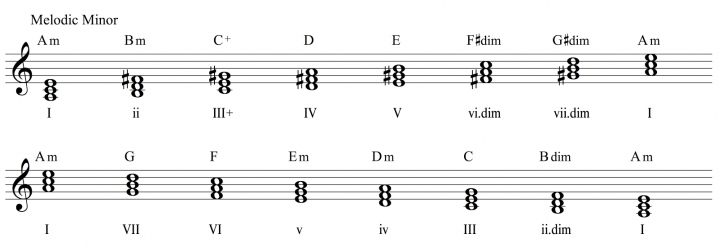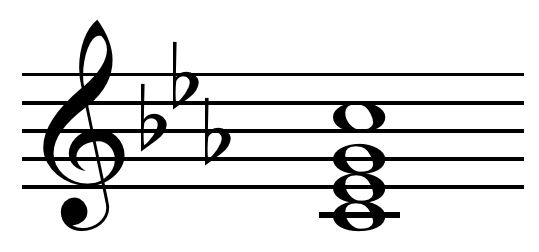
Technology can sometimes be really funny. It gives us a solution to the problems that we sometimes do not even realize that they prevail. A happy thing about it is that the new developments in technology have improved our lives more than we could imagine and have made it very convenient. Where technology is showing its wonders in almost every field of the world, it has not remained unkissed to the music world as well. The high-quality music that we hear today is a gift of unbelievable technological improvements in the musical instruments and their editing software. The powerful applications available in the market today are enough to substitute your hours of music learning in just a few hours. The chord finder is one such application that has very effectively made our music composing life a lot easier. Here is all that you must know about a perfect chord finder.
What is a chord finder?
Also known as chord identifier, this tool helps to find chords from different individual notes. Earlier this work was done by musicians manually that took a lot of time and professional training. Also, it was difficult to name a new chord which was invented say by accident. The chord finder has made all this work a cakewalk as it is capable to find and make new chords from the individual notes within few minutes. A chord finder can be used for any string instruments such as bass guitar, banjo, mandolin and ukulele like instruments. Therefore it can be said that a chord finder can help you find the chords that fit a particular musical notation or a certain fingering pattern in just a few minutes. It has made the life of a musician a lot simpler and faster. Are you struggling to find the right chords you should learn? Learn to play ukulele, learn to strum and hold your first chords easily.
What is the need of a good chord finder?

People often have this question in mind as most of them consider it as a useless tool. However, the number of advantages and reasons to use these tools in today’s world are countless. Good music pleases every year, but it is only the musical who can understand the mechanics behind its creation. If you are into this field, then you might understand it well, that how difficult or tough it is for a musician to handle so many tasks all at once. Moreover, competing in this fast moving world and giving out the best takes a lot of time. To remain in the competition and give out the best, musicians need technical support which can effectively and economically help them in performing the task.
Other than this the newcomers and budding musicians too need a lot of support to step ahead in their career. The chord finder makes this entire task simple and saves a considerable amount of a musician’s time. It has not become a need but a requirement in the fast running world. Therefore people need to understand the importance if chord finder and the value of its needs.
How does a chord finder works and how you can use it?
The chords are displayed in bar code versions as well as in the standard positions where all the types of chords are covered like major and minor chords. Using a chord finder is extremely easy. You just have to download the finder or use its software online and start using it. Here is some help for you to understand its working:
- Using the reverse chord namer– this helps you to find the chords by only supplying the note values. You simply have to enter the names of note, and the name of the chord will be displayed. It also helps you find the intervals too.
- Using regular piano chord namer– you can use the tool another way round too. You can enter the chord name to get the notes that comprise the chord. For example, you can enter the chord name C to get its notes. C= C E G.
- Use the scale identifier– you can use the chord identifier as the scale identifier tool. You just have to enter the root which will be followed by the mode.
Thus you would have now understood that a chord finder not only helps in finding the chords but it also has various other functions. The modern and advanced chord finder tools are coming with advanced features that will make your work more and easier.
The features of a good chord finder
There are some chord finder tools available in the market, but you cannot rely on all. You must know which tool will fit your needs the best. Therefore here are some of the features of a good chord finder which will help you to choose the tool without any confusion;
- Supports all the string instrument– a good chord finder is compatible with all the string instruments with 2 to 12 strings and has a flexible setting option.
- Supports all the chords– a good chord finder must support all the possible chords to give the best results. Make sure that it is possible to make new chords in the chord finder
- Determine cords to fit musical notation– it must determine the chords that firs a fingering pattern or musical notation for easy implementation.
- Good sound support– must have sound support so that the sound of any scale or chord can be heard at the same time. The played tones must be graphically highlighted, and you must configure how the chord sounds.
- Exportable scales and chords– it must be possible to export all graphical scales and chords.
- Customizable user interface– the user interface of a chord generator must be user-friendly, flexible and customizable so that it can be adjusted according to the different preferences.
The application that you use must have update support so that the technical up gradations can be made from time to time. After reading all this about a chord finder, it can be concluded that it is the best tool for musicians and the newcomers in the field of music. It saves a lot of time and gives out the best result with full efficiency. A good chord finder can not only improve your playing but can also play a role of virtual chord book and can help in instant chord recognition.



